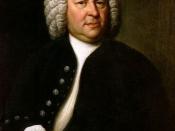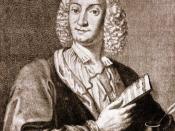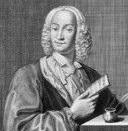The Concerto in the Baroque EraAccording to Kachlis and Forney, "contrast was as basic an element of Baroque music as unity. This twofold principle found expression in the concerto, an instrumental form based on the opposition between two dissimilar bodies of sound" (203).
The solo concerto and the concerto grosso were the two types of instrumental form produced by Baroque composers. In the solo concerto, the violin was the most frequently featured instrument with movements in the sequence allegro-adagio-allegro. The concerto grosso was based on the opposition between a small group of soloists, also called the concertino and a larger group called the tutti. Arcangelo Corelli was an early contributor to this genre by establishing the model for the trio sonata, which eventually became the favorite instrumental form of chamber music in the Baroque. The concerto spread all over Europe and influenced German master Bach along with the most famous Italian composer Vivaldi.
Bach was a composer of vocal church music. He produced a large number of instrumental chamber works and ended up with an opportunity to write works for Margrave Christian of Brandenburg's orchestra. These works later become known as the Brandenburg Concertos. Bach's six Brandenburg Concertos are prime examples of the concerto grosso. In addition, Bach gave the harpsichord solo status in the concerto. Bach was somewhat influenced by Antonio Vivaldi.
Antonio Vivaldi was a virtuoso violinist. Vivaldi became a music master at an orphaned school called Ospedale della Pietà . Most of his concertos were written for the orphaned girls, which brought attention to other visitors from all around Europe. He has composed over 500 concertos, and has also written a lot of chamber music as well as sonatas and cantatas. Vivaldi composed The Four Seasons which was a set of solo violin concertos and his...


